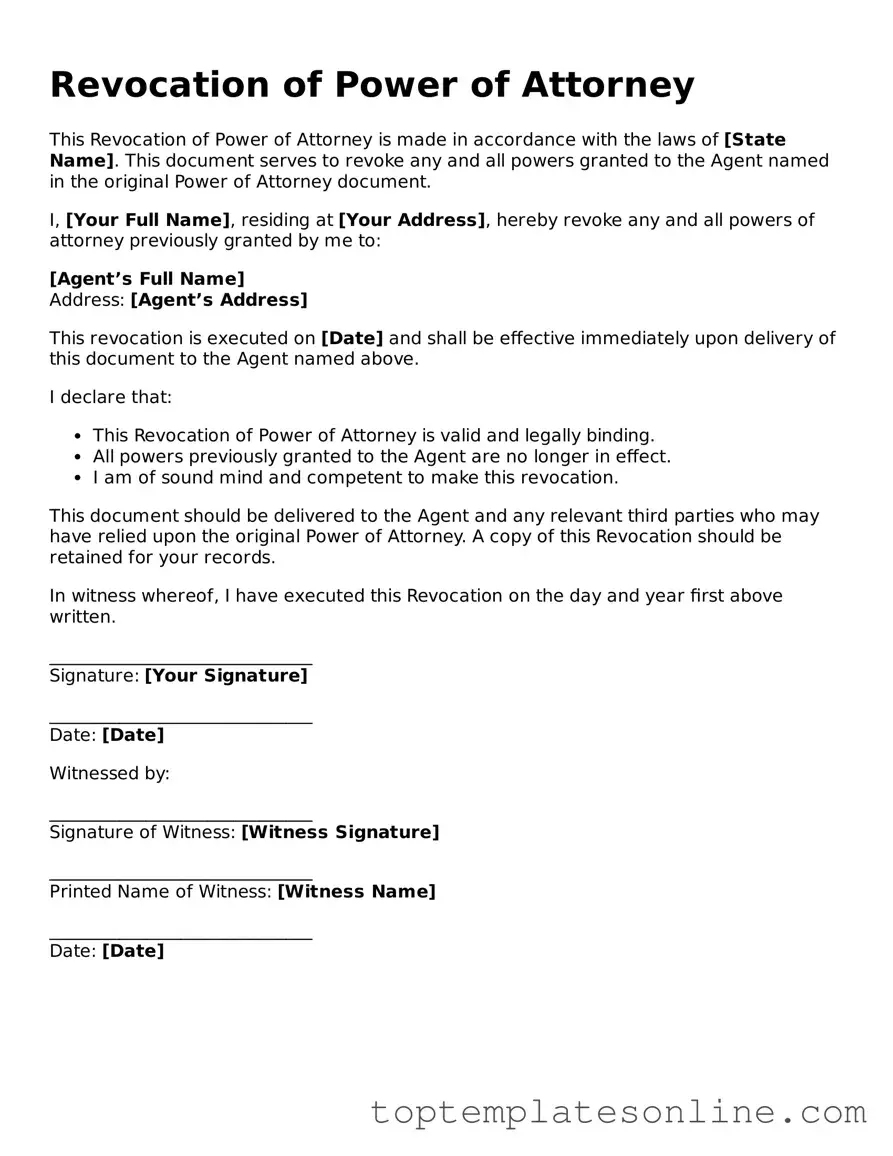When it comes to managing personal affairs, a Power of Attorney (POA) can be an essential tool, allowing someone to act on your behalf in financial or medical matters. However, there may come a time when you need to revoke that authority. The Revocation of Power of Attorney form serves as a crucial document in this process, clearly outlining your intention to terminate the powers granted to your agent. This form not only protects your interests but also communicates your decision effectively to all parties involved, including financial institutions and healthcare providers. It is important to understand the key components of this form, such as the identification of the principal and the agent, the specific powers being revoked, and the date of revocation. Additionally, ensuring that the form is properly signed and witnessed can help prevent any disputes or confusion in the future. By taking the necessary steps to revoke a Power of Attorney, you regain control over your personal and financial matters, providing peace of mind in an ever-changing world.
